#the garage 1920
Explore tagged Tumblr posts
Text
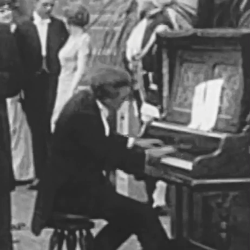
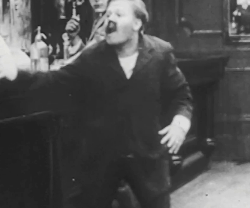
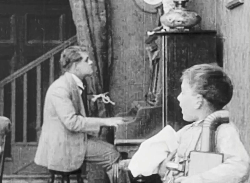
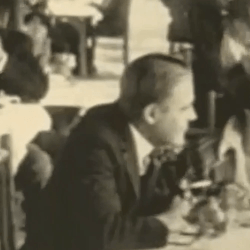

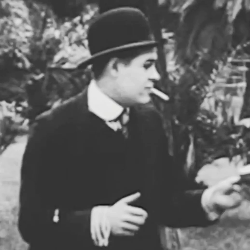






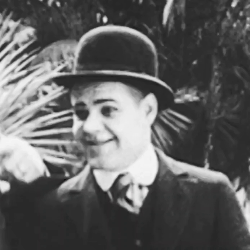
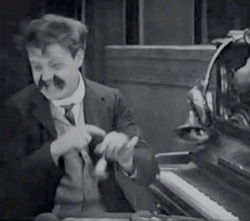


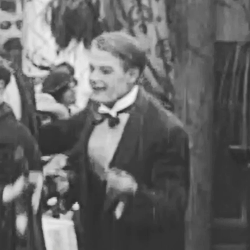
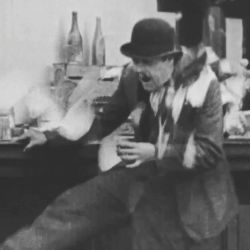
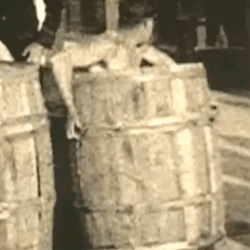
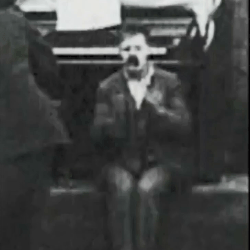
Harry Hewitt McCoy (1893-1937)
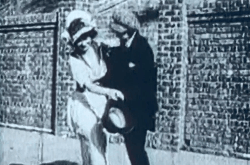
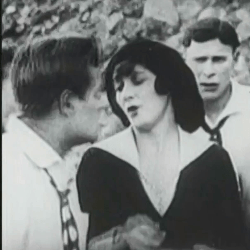


#harry mccoy#mabel and fatty's wash day 1915#mabel's blunder 1914#those bitter sweets 1915#dirty work in a laundry 1915#fatty's magic pants 1914#a close shave 1920#a movie star 1916#fatty's chance acquaintance 1915#getting acquainted 1914#mabel's busy day 1914#mabel's strange predicament 1914#the garage 1920#making a living 1914#that little band of gold 1915#we'll get you yet 1921#the masquerader 1914#tillie's punctured romance 1914#her torpedoed love 1917#the knockout 1914#fatty's reckless fling 1915#the star boarder 1914#circus heroes 1921#fatty's faithful fido 1915#favorite#my edwardian man
2 notes
·
View notes
Text
Buster Keaton The Garage (1920)
#buster keaton#1930s#1910s#1920s#1920s hollywood#silent film#silent comedy#silent cinema#silent era#silent movies#pre code#pre code hollywood#pre code film#pre code era#pre code movies#damfino#damfinos#vintage hollywood#black and white#buster edit#slapstick#old hollywood#the garage#1920
85 notes
·
View notes
Text
This Day In Buster…December 15th 1961
Buster Keaton stars as ‘Woodrow Mulligan’ on the Twilight Zone TV episode, ‘Once Upon a Time’, directed by former film director Norman Z. McLeod. The time travel episode is definitely for laughs with plenty of nods to Buster’s career.
#ibks#the international buster keaton society#damfamily#buster keaton society#the damfinos#buster keaton#damfino#vintage hollywood#silent era#silent movies#roscoe arbuckle#twilight zone#the garage#day dreams#1920s hollywood#1960s hollywood#1961#damfinos
67 notes
·
View notes
Text

The Vanderbilt Garage, 1924.
Photo: Ralph Steiner via Invaluable Auctions
34 notes
·
View notes
Text
Covered in asphalt or gravel, the area behind the house was “a utilitarian space where trash was burned, clothes were washed and hung up to dry, and unneeded household items were left to rust.” It was in front of the house that children played, in the yard or in the street, in view of the neighbors. The border between private and public space was the porous alcove of the front porch, a place for supervising those kids, flirting with a classmate in the respectability of the public view, snooping on neighbors doing the same, or adroitly greeting relatives or salesmen who weren’t quite welcome inside the domestic sanctum. […]
In the 1920s, the backyard began to supersede the front porch as the primary domestic outdoor social space. This switch would be accelerated by the arrival of indoor enjoyments like television and air-conditioning, as well as appliances like washers and dryers, which freed the backyard from its workaday purpose, but it began with the automobile. Prior to widespread car ownership, streets were multifunctional public places suitable for hawkers and markets, stickball games and snowball fights, the storage of construction materials, and waste disposal. The roaring car traffic associated with Henry Ford’s Model T cemented the street’s sole purpose as a thoroughfare. […] The suburban cul-de-sac was the fruit of newly widespread car ownership—and a refuge from it. In 1922, House Beautiful noted strains of front porch fatigue: “the increase in motor-traffic, the dust and proximity of other houses tend to make the front porch less desirable each year . . . One prefers [porches] turned away from the trivial drama of the street with its hucksters and milk wagons and gossip.”
At the Tenth National Conference on Housing in 1929, one speaker declared that the dirty old backyard, of all places, could be repurposed to offer “charm and sanctuary from a too noisy world”—away from “front porch promiscuity.” But it was less the question of how cars moved than of where to keep them that changed the shape of the American house. This shift from front porch to backyard coincided with the forward march of the garage, out of the backyard and into the house itself, as the car (later, cars) assumed its prime place in family life. Wright led the way. With his Usonian houses, a series of middle-class dwellings he designed beginning in the 1930s, America’s foremost architect invented a new word, carport, to describe an attached, sheltered overhang for car storage. […] He preferred the carport to the attached garage for the same reason he disliked basements: closed garages were likely to become just another place to gather household clutter.
Nevertheless, the implements of the closed, attached garage were all in place and awaiting the postwar housing boom. Overhead garage doors were commonplace by the 1910s, electric garage door openers by the 1930s. Early subdivisions may not have had interior spaces for cars—at the most famous of them, Levittown, east of New York City, the entire house was barely the size of a modern three-car garage—but the attached garage became de rigueur in the 1950s as mass-transit ridership plummeted and the car reinforced its dominance.
10 notes
·
View notes
Text

𝐇𝐢𝐠𝐡 𝐒𝐭𝐫𝐞𝐞𝐭 - 𝐏𝐫𝐞𝐬𝐭𝐨𝐧 𝐕𝐢𝐜. c1920s
1 note
·
View note
Text


A view of the Imperial Garage in 1925 on Dickson Road, North Shore. A Kwik-Fit garage now sits on the site.
0 notes
Text

Le garage de Fatty, 1920.
Dessin d'André Félix Roberty.
1 note
·
View note
Text
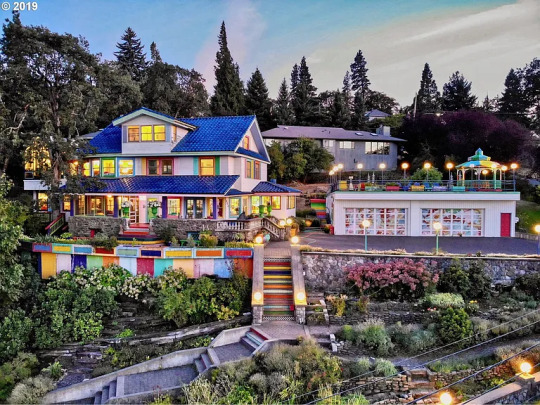
NOOOOOOOOO! Why did they buy this gorgeous, 6bd, 4ba, colorful 5,340 sq ft, Hood River, OR home for $1,964,700 and do THIS:

OMG, let's revisit what it USED to look like before these charlatans bought it.
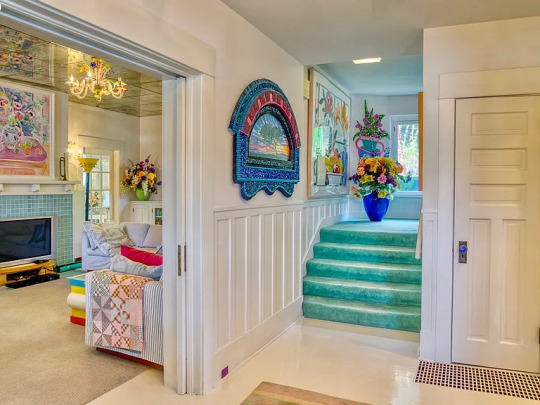
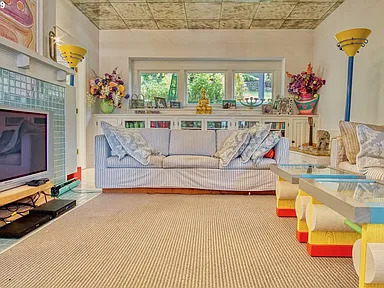
I could cry. It was so delightful.

There was a colorful, bright, dining room.

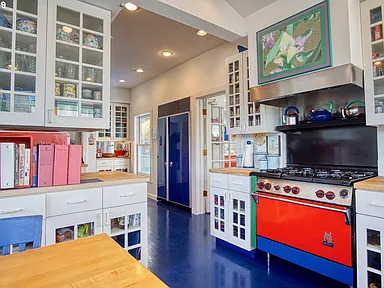
And, I wonder what they did w/that stove.

The kitchen had aisles of cabinetry with colorful cats capping the ends.
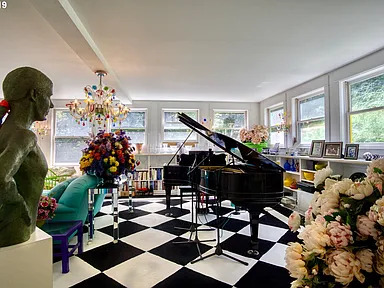
Love this room.

Look at the 2nd fl. addition they did.
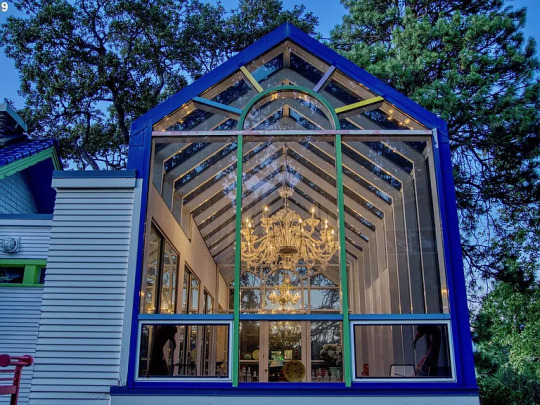
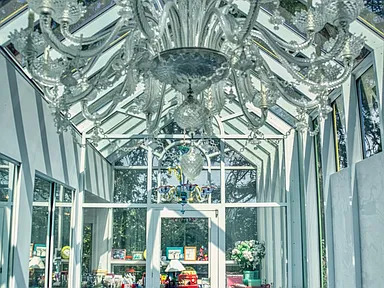
Fabulous.
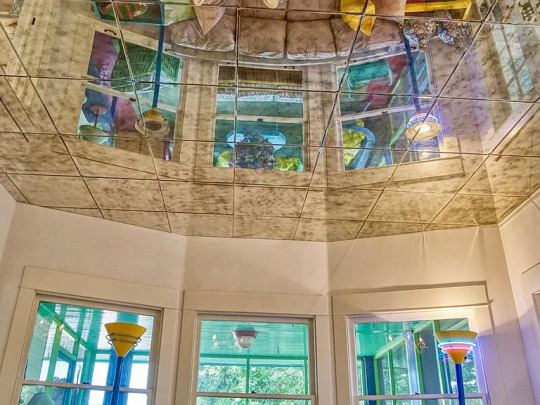
I don't even know if any of these architectural features remain.

Such lovely glass rooms.

So many light, sunny rooms with windows for great views.

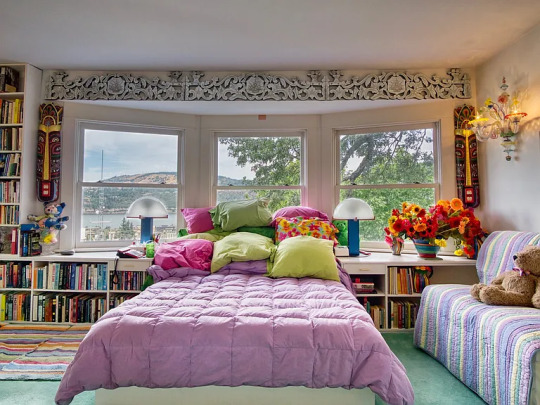
Lots of built-in shelving in the large primary bedroom.

The home has shelves galore, which would've been perfect for an avid reader or someone with an extensive collection to display.

There is a real library, too. Look at the stacks.
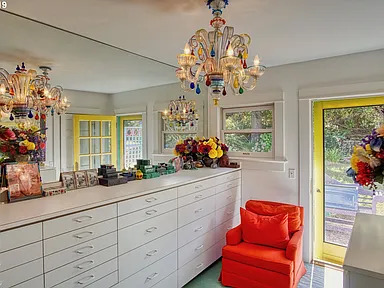
This looks like a walk-in closet. Very elegant.
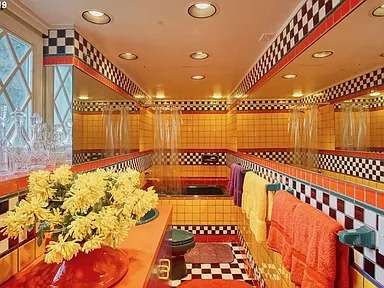
Look at the tile in this bath.
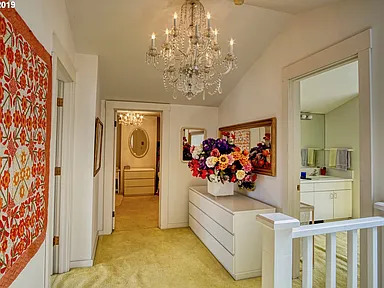
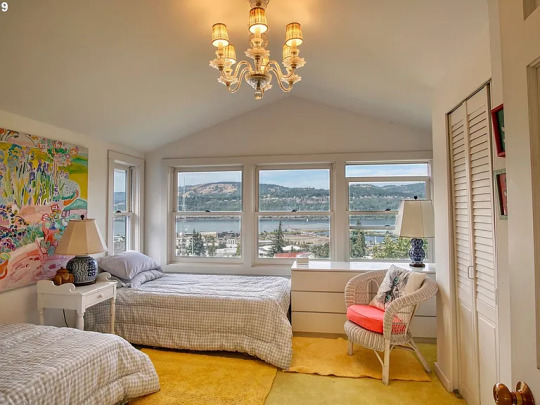
All of the bedrooms have windows w/beautiful views.
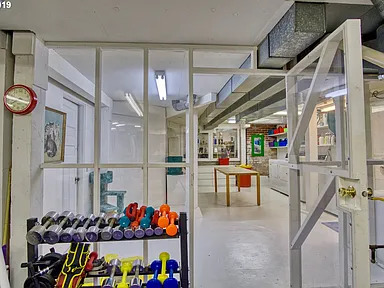
There was a home gym in the lower level, plus a rec room.
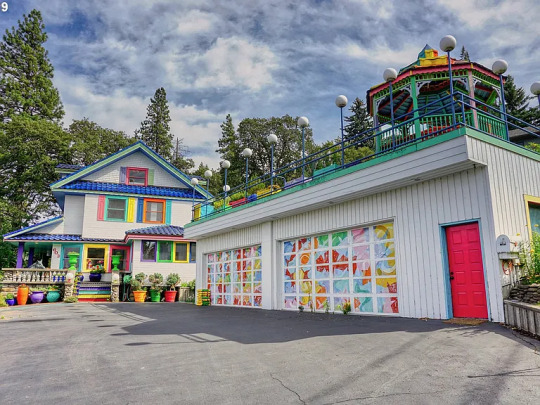
A colorful gazebo stood on the garage roof.
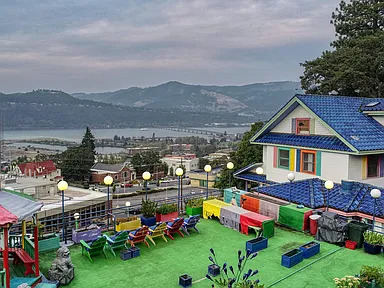
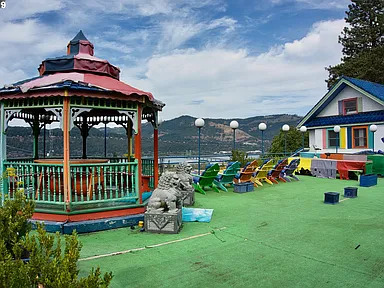
Delightful deck facing the Columbia River.
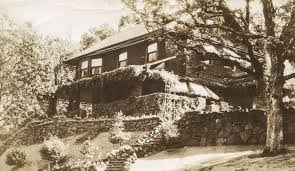
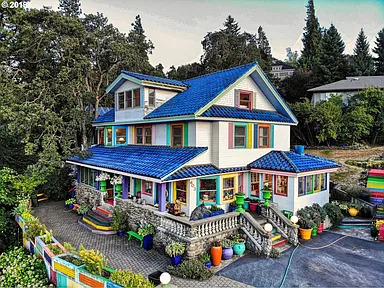
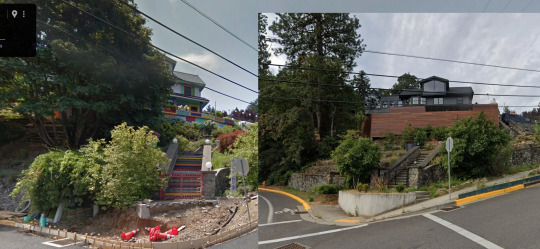
The evolution- When it was built in 1920, then it was renovated and colorful, and now, the latest reno in dark gray & brown.
https://www.zillow.com/homedetails/603-Sherman-Ave-Hood-River-OR-97031/84581523_zpid/?
google maps
527 notes
·
View notes
Text




Worldbuilding time! Let's talk about vehicular travel in modern day Amaranthine, using the snowmobiles from this recent comic as a jumping off point.
"Prowler" - Ironfrost patrol snowmobile - (year of manufacture: 1912)
These half-track all terrain vehicles are used by Ironfrost soldiers to travel long distances over the tundra. Originally adapted from older, four-wheeled automobiles, the half-track Prowler design became increasingly standardized over the years as eternal winter continued to creep southward. They are capable of operating in a wide variety of terrain conditions and are fairly modular. Common mods include removable skis, hardtop and softtop roofs, gun mounts, and towing attachments.
Like all vehicles, Prowlers are steam-powered. The external combustion engine runs on kerosene. In snowy conditions, feedwater can be obtained automatically through a scraper port on the underside of the vehicle, though manual feeding is required in muddy or dry conditions.
Though not as fast, reliable, or efficient as trains, their agile nature have made them an essential part of life in the far north… and, increasingly, in the middle country as well. The Rising Dawn have stolen several Prowlers for their own usage.
"Aspire" - Classic automobile (year of manufacture: 1890)
Four-wheeled vehicles are an unusual sight in the modern day. Ironfrost-made cars were in vogue among the southern rim upper class for many years, but the worsening climate has made them more and more niche as road conditions outside of major cities deteriorate. The majority of higher horsepower automobiles were converted directly into half tracks, while older, lower-end vehicles were generally scrapped for parts.
The Aspire was the last four-wheeled vehicle widely available to the public. Advertised as a stylish, powerful, modern vehicle for the elite on the go, it boasted a sleek, classy aesthetic, a removable softtop roof, and a powerful steam engine with a large kerosene tank suitable for travel between cities. Preorders were advertised to southern rim wealthy in local papers. However, a series of unusually bad winters soon after its debut scared off buyers, shutting down production early and ultimately spelling doom for the entire four-wheeled automobile industry.
One of those Aspire preorders went to Baroness Jocosa North. Though she has since passed away, her son, Theopolis North, still maintains the now wildly impractical car in near mint condition. It is almost never seen outside of its garage.
"'Icebreaker' Class E 250" - Northern cross-country train (year of manufacture: 1903)
The majority of modern-day overland travel is accomplished via train. Massive long-distance rail lines, laid before the world became quite so cold, connect the remaining cities, allowing (relatively) safe travel and trade across vast expanses of tundra.
Southerly locomotives typically operate with only a basic wedge plow attachment. However, trains that run further north must be fitted with gigantic rotary snowplows. These complex machines require significant maintenance. Though they can and will chew up most things that get in the train's way, encounters with particularly large and bony beasts have been known to jam them.
Ironfrost's line terminates in a massive, sprawling rail yard where Icebreakers are fitted and maintained. Those who have visited it tell of a dark, dreary wasteland of twisted scrap metal and ice where coal dust and smoke have turned both the sky and ground black. All northern trains must pass through that place eventually.
"Chariot of the Dawn" - One-of-a-kind luxury automobile (year of manufacture: 1920)
The only place where four-wheeled automobiles still thrive is the City of the Sun. The eternal summers and paved roads are well-suited to cars and trolleys, though they are, of course, still something of a luxury good. Licenses for ownership and operation are ultimately controlled by the church, with His Radiance having the final say. (His most devout followers, of course, tend to get preferential treatment here.)
The City of the Sun manufactures its own vehicles, adapted from Ironfrost designs in a sort of divergent evolution. Freed from the road and weather concerns of the outside world, their automobiles favor sleek, swoopy body shapes, ornamental trim, low-slung bodies with limited ground clearance, and pastel paintjobs. Additionally, the engines are far less powerful and far more finicky, requiring regular maintenance.
His Radiance himself owns several custom automobiles, all of which are egregiously bedazzled to a degree that would look grotesque to anyone who wasn't used to it. Some are open-top, allowing his loyal followers an audience with his beautiful face and glittering halo, while others feature tinted windows. You know, in case he wants subtlety.
#furry#furry art#cars#vintage cars#worldbuilding#verse: amaranthine#things nobody asked for but I did anyway :P#it is pretty important to have designs for these though the story moves the characters back toward civilization (slowly)#my ocs#alex#ridge#others' ocs#theo#ambroys#(as usual the vehicles are heavily referenced!)
515 notes
·
View notes
Text

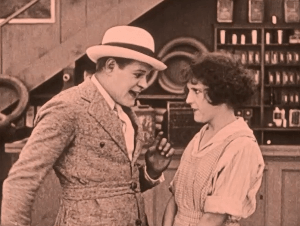


The Garage (1920, Roscoe Arbuckle)
0 notes
Text
Buster Keaton and Luke The Garage - 1920
#buster keaton#1930s#1910s#1920s#1920s hollywood#silenst film#silent comedy#silent cinema#silent era#silent movies#pre code#pre code hollywood#pre code film#pre code era#pre code movies#damfino#damfinos#vintage hollywood#black and white#buster edit#old hollywood#slapstick#luke the dog#1920#the garage
37 notes
·
View notes
Text
This Day in Buster…August 12, 1920
Australian newspaper, the Glenelg Guardian says of “The Garage”: (Luke the)”…dog has an insane role, and is instrumental in parting Buster Keaton from his trousers.”
#this day in buster#buster keaton#the garage#roscoe arbuckle#luke the dog#1920s#comique#silent era#silent movies#vintage hollywood#ibks#the international buster keaton society#buster keaton society#the damfinos#damfino#damfamily
30 notes
·
View notes
Text
Mon Cher Chapter 1
*Idea found on TikTok by @yaberdat aka Finnley.*
“A modern day writer exploring a vampire’s estate during the day. Wondering why a random room was locked. Until…they find a Victorian painting of themself.”
*garer: shelter, where the word garage originates
Next chapter

Y/N had always been a little…odd. She always felt like she didn’t belong. Like she was out of place, or more aptly, a woman out of time. Her mother called her an old soul. She loved things that were old, vintage, retro, whatever it was called at the moment, and particularly from the turn of the century and into the 1920s. She didn’t understand the trends, didn’t relate to the kids her age growing up, and she buried herself in romance stories of characters who yearned and were desperate for one another. And after a school choir trip to New Orleans when she was 15, she had become obsessed with the city and its history. She felt more at home and at peace there than she had anywhere else her entire life.
She had purposefully applied to Tulane University just so she could live there, and got a Bachelor of Arts in Design. When school was finished she integrated herself fully into New Orleans, moving into a little bungalow with two roommates and getting a job working for a self proclaimed witch named Toussaint in his shop along the French Quarter and taking on design clients part time, helping bring their eclectic styles into cohesive designs within their homes. Her weekends consisted of wandering the streets looking for new discoveries, taking guided tours around the city, bayou tours and parties with her roommates. The most fun she had was at old dance halls or bars where she and her friends would dress up in old fashioned clothes and makeup and listen to the classic jazz and blues music while dancing the night away.
Then on a bayou tour she spotted something. “What is that?” she asked the tour guide, pointing to something peeking through the high grass and willow trees.
He squinted at the area she was pointing to then sighed. “That’s the abandoned Barnes mansion,” he said sadly. “Beautiful but haunted Queen Anne style home.” She raised her eyebrows and stared at the house hidden amongst the overgrown Louisiana marshland. “It used to be open for tours, but it flooded during Hurricane Katrina and nobody took the time or money to have it fixed up,” he said.
“Nobody can reach it now?” she asked.
“I’m sure you could. But it’s been left to rot, so best to steer clear for your safety,” he said, then turned his attention back to the regular part of the tour.
Y/N knew at that moment that she would be paying a visit to the Barnes mansion, one way or another.
***
Her roommates-turned-friends Yelena and Kate dragged her to a party after the Bacchus parade during Mardi Gras. They were dressed in flapper dresses this year, and Y/N had pinned her hair to look short and gone full out with the outfit and makeup. They sipped on their cocktails as they meandered through the party, admiring the old architecture of the building they were in and looking at all the paintings and pictures on the walls. At one point they found themselves in a quiet alcove where Yelena collapsed on the nearby stairs and kicked her heels off.
“Ugh, get these wretched things off of me,” she whined, massaging her feet as she grimaced in pain.
Y/N giggled and leaned against the wall opposite of her to wait for her to be ready to go. Kate leaned against the banister then looked at the wall Y/N was on then gasped. “Y/N!” she said in shock, staring at the wall. “Look!”
Y/N frowned and turned to look at the painting on the wall just above her head. It was a portrait of a woman in an early 1920s evening dress that was close to the same design and color palette Y/N had chosen for her flapper dress, with beaded strands hanging off her sleeves, the dress an emerald green color that had an ombre effect into gold at the bottom, her hair styled just like Y/N’s was now. What was striking was the fact that the woman in the portrait and Y/N looked almost exactly alike.
“Oh my god,” Yelena gasped, her eyes moving back and forth between Y/N and the portrait. “It’s you.”
“Very funny,” Y/N chuckled, finishing the last bit of her drink.
“No, it looks exactly like you,” Kate agreed, pulling out her phone. “Pose like her.” Y/N shook her head but did as she said, posing like the woman in the portrait as Kate took a picture. Kate pulled her phone close to her face then shoved it in Yelena’s face, who raised her eyebrows, then into Y/N’s face. “It is you!”
“Weird,” Y/N said. She had to admit, it did look just like her. She turned back to the portrait and looked at the plaque at the bottom of it. “‘Lady Barnes: The Belle of the Vampire Ball,’” she read quietly. “I haven’t heard of her.”
“Wait, I remember this,” Yelena said with a smile. “The legend of Lord Barnes, the rumored vampire of the northern bayou.”
“Barnes as in the Barnes mansion?” Y/N asked, her interest piqued.
“Yeah,” Yelena nodded with a knowing look. “That abandoned one you saw. He and his wife used to throw a vampire ball every Halloween, and every year someone went missing from it. The rumors spread that the missing person was like a sacrifice to Barnes and his wife, since they always looked reenergized and refreshed after the ball. The legend of their youth and beauty, as well as their belief in the occult, made them targets for religious zealots and the local authorities at the time, and Lady Barnes was killed during an altercation with some Catholic vampire hunters.” Y/N was hanging onto her every word. “Lord Barnes swore that he’d get his revenge, then killed multiple priests and set fire to the church. He never came out, so people assumed he died in the fire. But there’s always been talk of how he would rise again once he found his reincarnated wife.”
“Spooky,” Kate said with a hushed and reverent tone. “Well, looks like the Belle of the Vampire Ball is back,” she said with a smirk towards Y/N.
Y/N rolled her eyes, making the other two laugh. “He will find you, and rise again!” Yelena said, wiggling her fingers at her with wide eyes. “To be together forever!”
“You guys are ridiculous,” Y/N snickered, and they all laughed together then helped Yelena get back in her shoes before moving to return back to the party. Before they left the alcove Y/N looked back at the painting. It really was uncanny just how much it looked like her, and she had a strange feeling about the portrait. She shook her head at herself and quickly took a picture of the portrait before scurrying down the hallway to rejoin them.
***
“Yeah, I can see it,” Toussaint nodded as he looked at the picture on her phone then back at her. “I thought it the first time I saw you.”
“Really? Why didn’t you say anything?” Y/N asked in surprise, following him as he walked around the counter towards the backroom.
“Well, that’s cursed history,” Toussaint retorted, giving her an unimpressed look. “I may do hoodoo but that doesn’t mean I dabble with that stuff.”
“It’s just an old ghost story,” Y/N smiled.
“Not in New Orleans it ain’t,” he replied. He walked up to her and reached out to the necklace with a small pouch on it that he’d given her when she first started working there. “I can see you already making plans in that head of yours to go see the mansion,” he said quietly. “I would caution you not to. But if you do, make sure you keep this on.”
“Why?” she asked with a frown.
He shrugged. “Just in case,” he said simply, then walked away to stock more crystals.
#marvel#bucky barnes#smut#bucky barnes x reader#bucky barnes fanfic#series fanfic#chapter 1#vampire!bucky barnes#vampire!bucky barnes x reader#new orleans
72 notes
·
View notes
Text

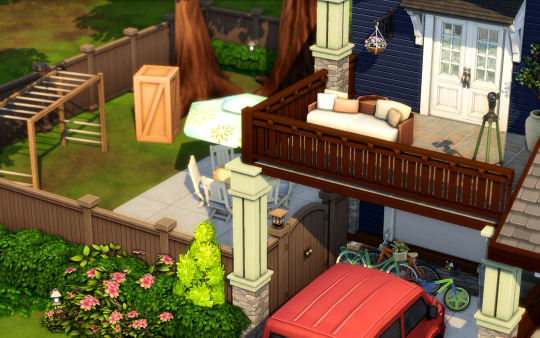


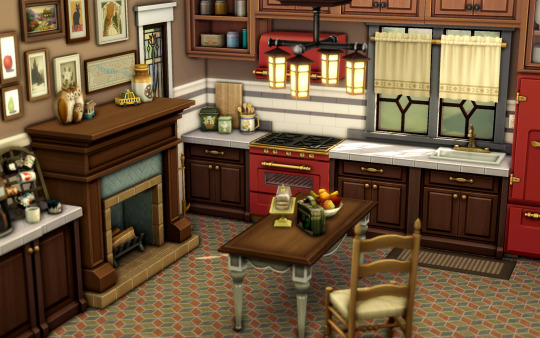
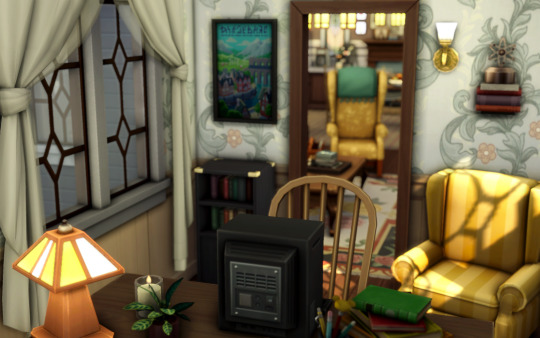

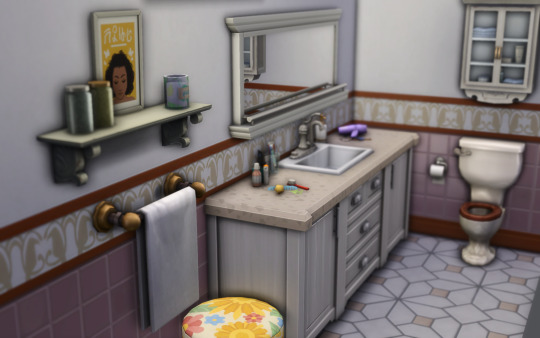
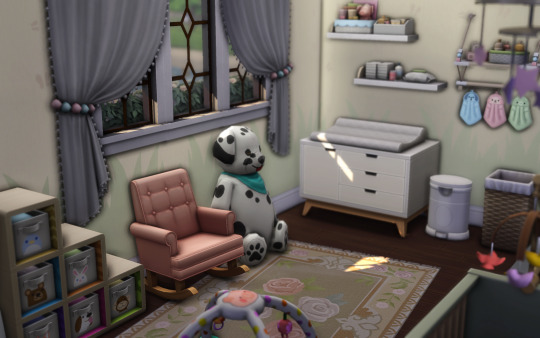
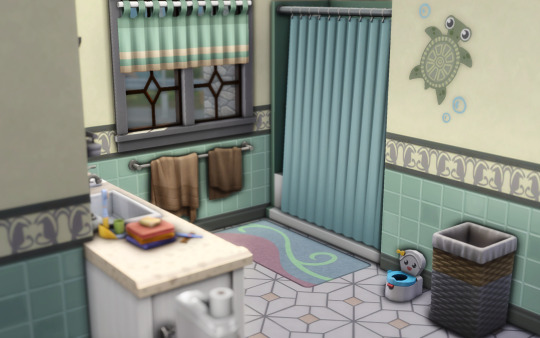
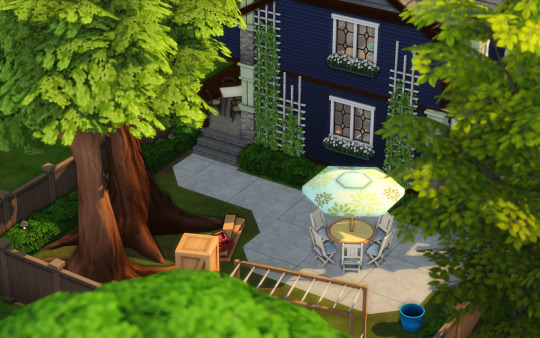
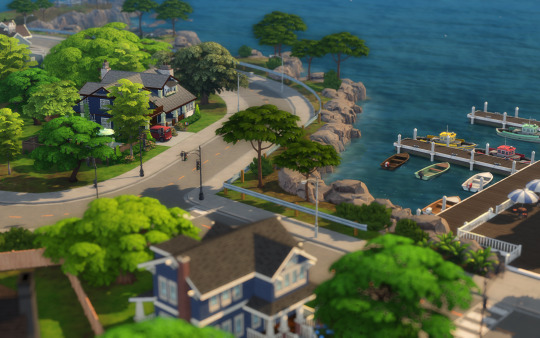
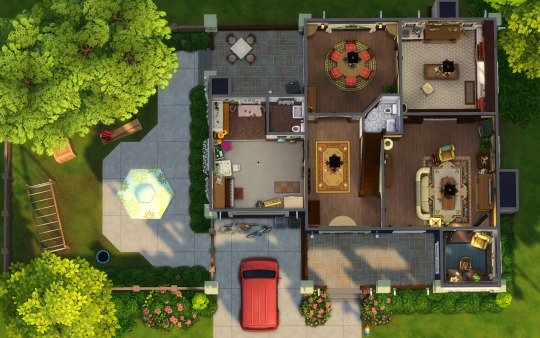
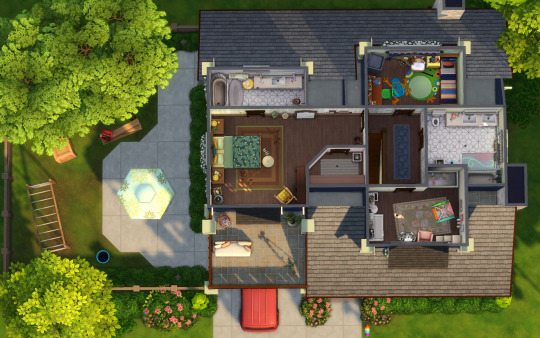
🌁 The Eucalyptus Bungalow 🌁
Across the bay from Anchorpoint Wharf in San Sequoia is this cozy craftsman. From the second-story balcony and front porch, you can enjoy the hustle and bustle of the city that lies just beyond the bridge.
Inside are all the details of the original craftsman, from the stained glass archways and wooden moldings. There’s also a small office overlooking the water and a converted garage for a growing family. Upstairs is a spacious trio of bedrooms and two bathrooms, designed for two caregivers, an newborn, and an adventurous child. For sunny days there’s a garden with a potential treehouse and table for family game night.
Lot Size: 30x20 Original Lot: 23 Eucalyptus Lane Lot Value: 102,259 House Size: 3 Bedrooms, 4 Bathrooms Lot Traits: Good Schools, Homey CC-free
This house is designed in a modern style, but for my fellow decades players it could easily be usable in the 1980s and 1990s with a few small tweaks. With more interior redesign, I think it could also work for the 1920s-1940s!
But as usual, it is CC free so that everyone can download it easily, but please feel free to redecorate or redesign it to your heart’s content, just tag me if you use it so I can see your lovely pixels enjoying it too!
Available to download on my gallery ID: aheathenbuilds or here (SFS, no ads).
#ts4#ts4 build#ts4 cc free#sims 4#sims 4 build#the sims 4#the sims 4 build#ts4 download#ts4 build download#sims 4 build download#San sequoia#23 eucalyptus Lane#sims 4 growing together#the sims 4 growing together#San sequoia build#growing together build
281 notes
·
View notes
Text


A 1928 view of the Yelloway bus building which would become Westmorland Garage on Queen Victoria Road, off Central Drive near Revoe school.
0 notes